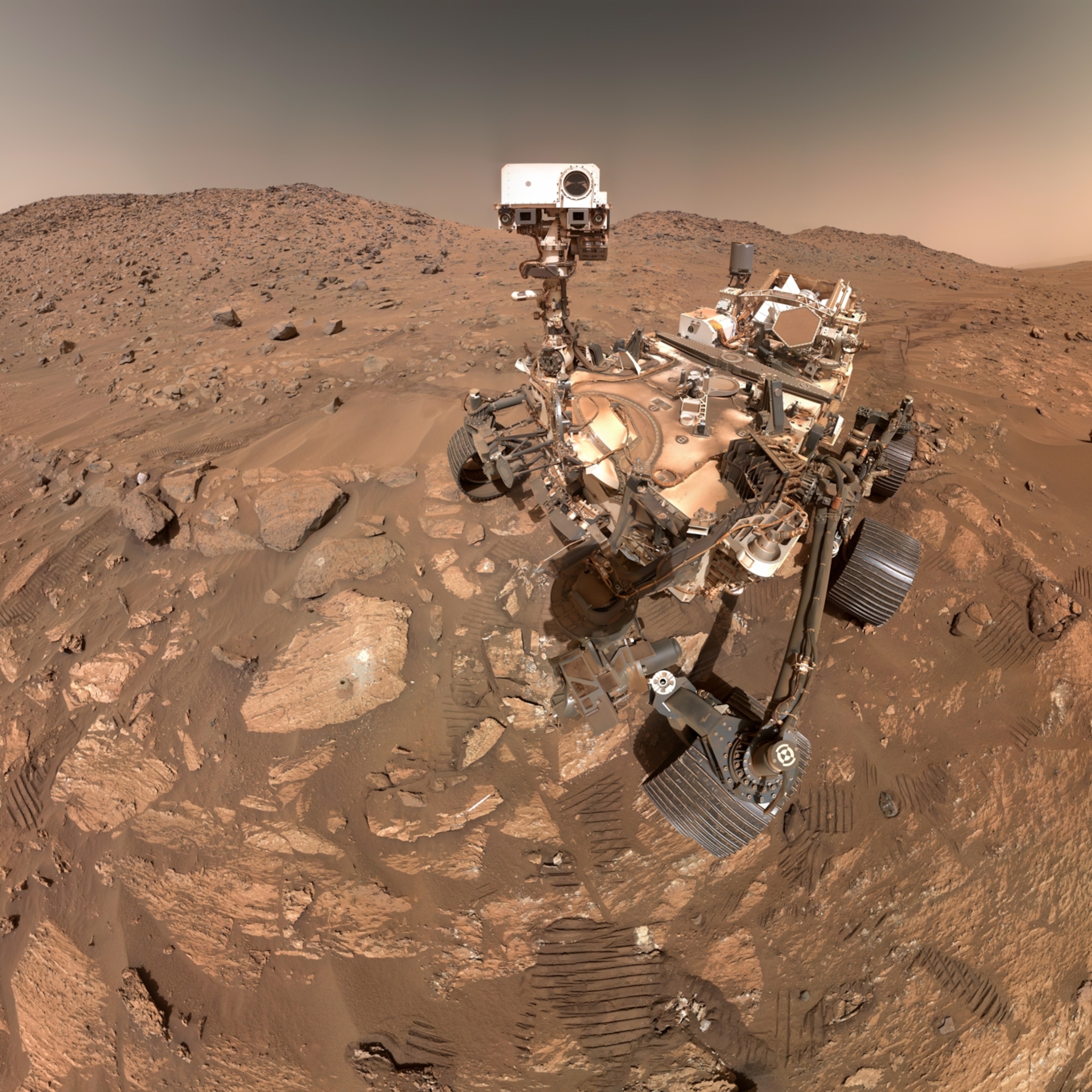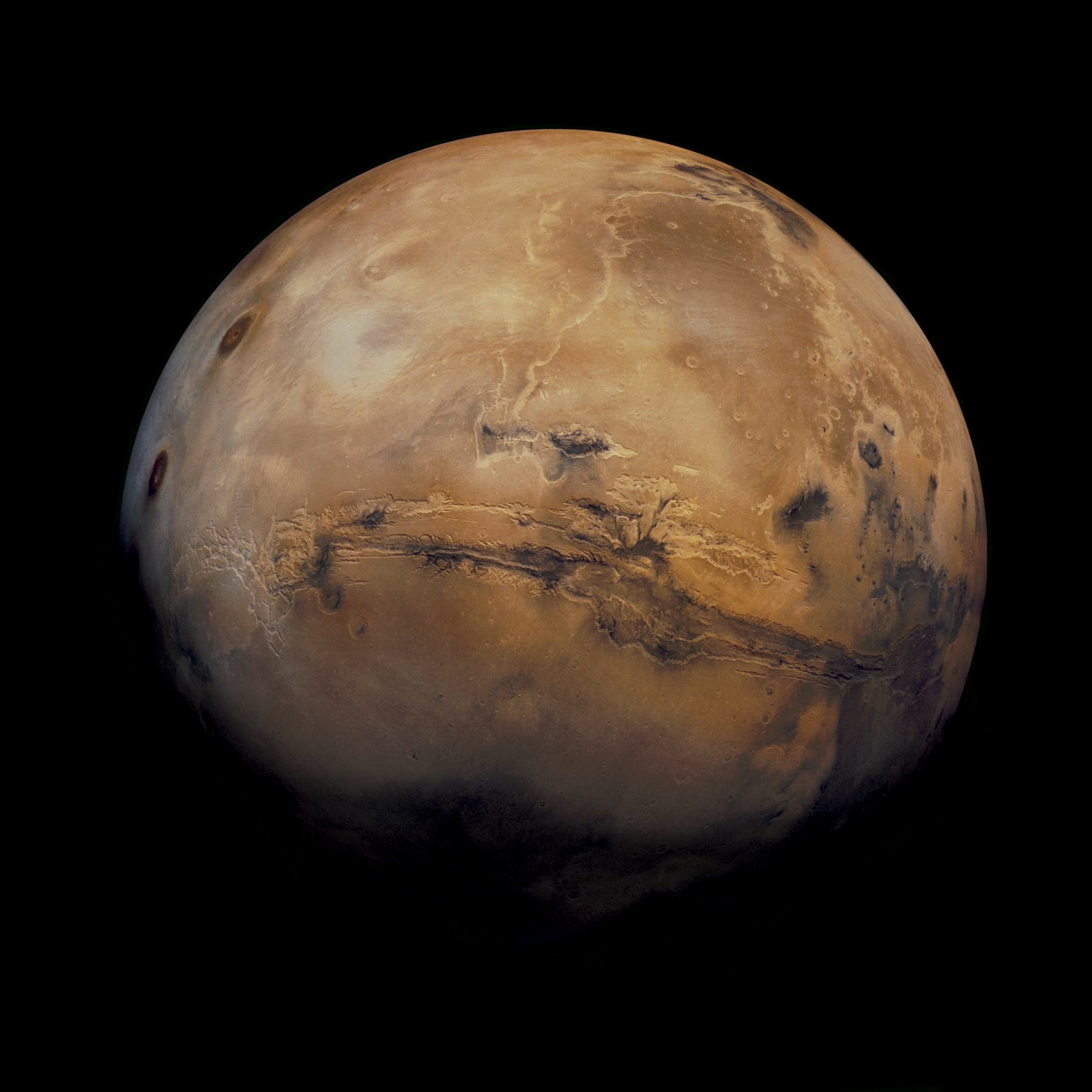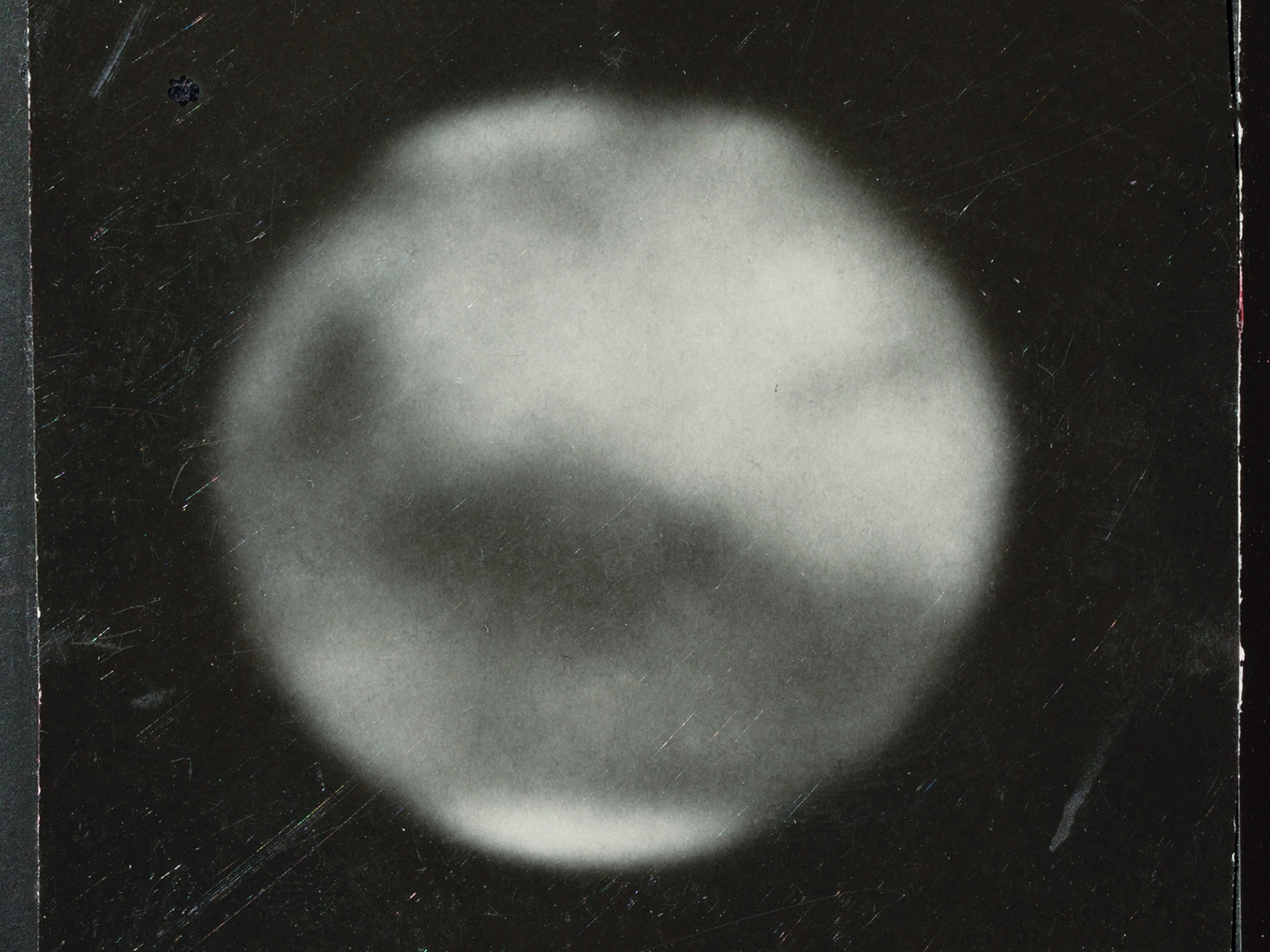How helicopters are shaking up the hunt for life on Mars
NASA’s Perseverance rover recently collected tantalizing rocks that may hold clues to ancient aliens—even as engineers make big changes to their plans for getting those samples to Earth.
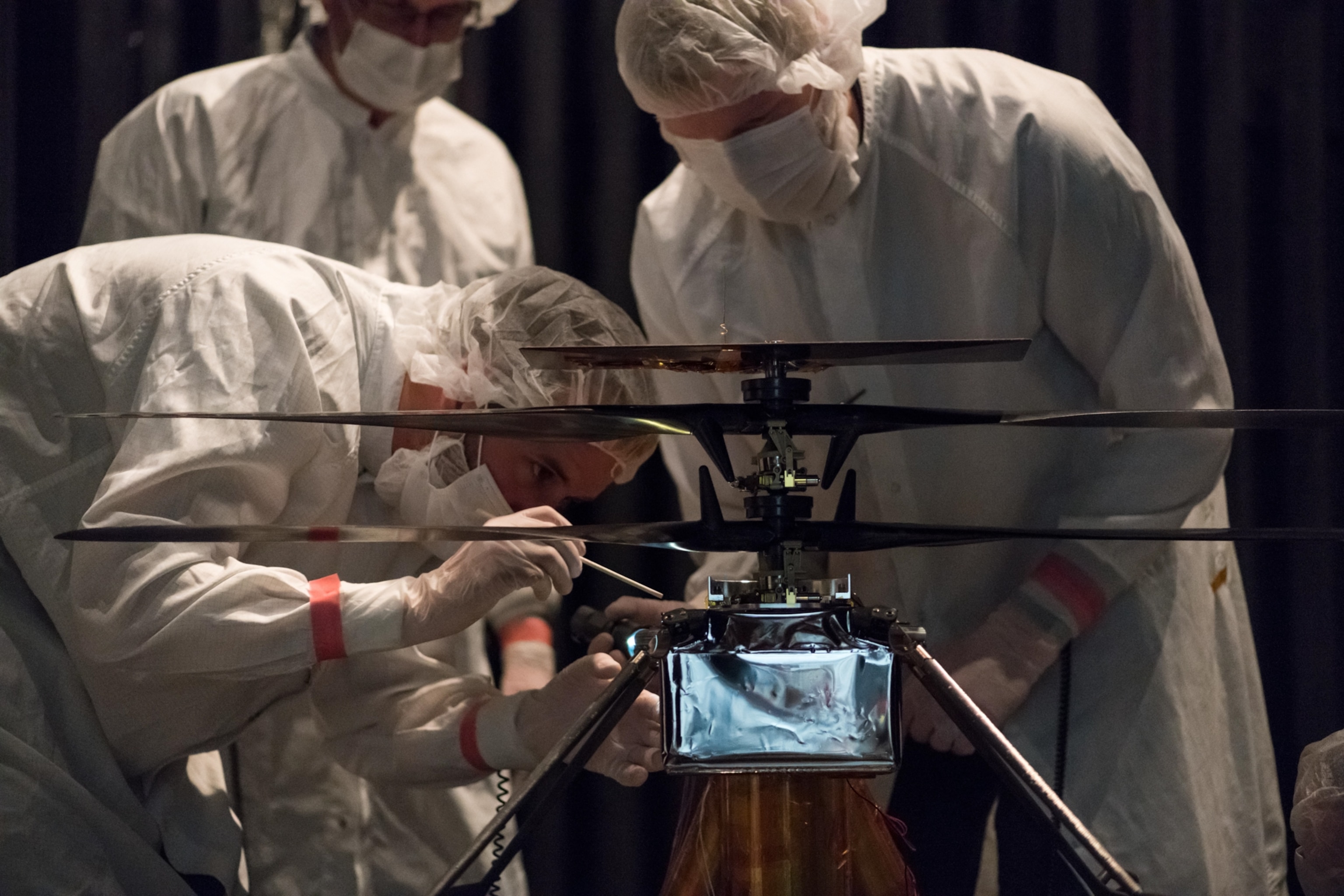
The search for signs of ancient Martian life is getting an airborne assist.
The ultimate goal, aside from discovering whether Mars was ever an inhabited world, is to bring back a cache of pristine rocks from the red planet’s surface. To do that, NASA and the European Space Agency are collaborating on the Mars Sample Return (MSR) mission, which aims to deliver Mars rocks to Earth in the early 2030s.

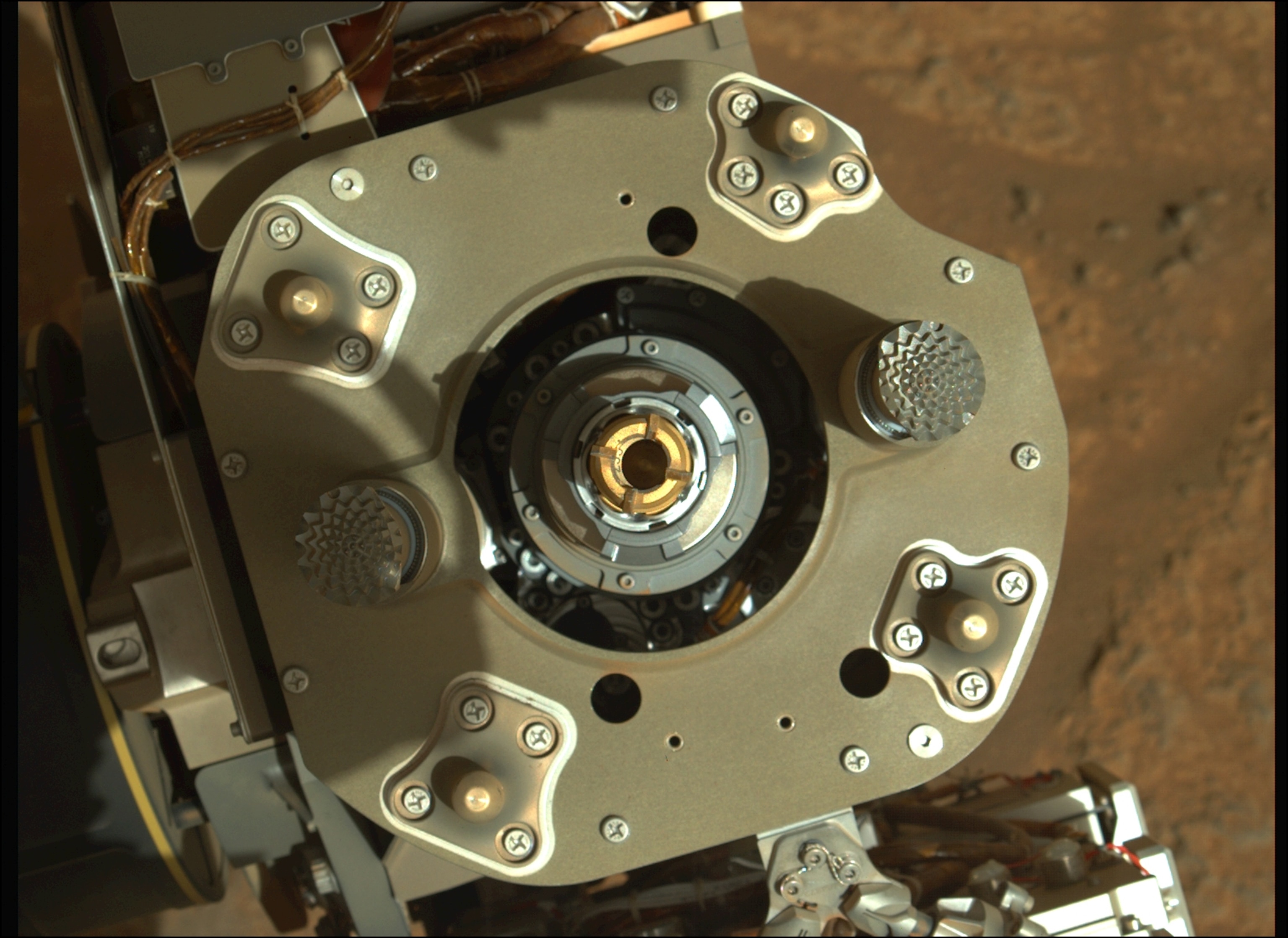
But it won’t be cheap, or easy: The endeavor, originally estimated to cost at least $7 billion, will rely on a series of spacecraft to achieve its goal—a fleet that now will include a pair of helicopters. These Martian flyers will be modeled after a prototype helicopter called Ingenuity, which arrived on Mars in February 2021 with NASA’s Perseverance rover and has proven to be a giant success.
“Ingenuity has far exceeded anyone’s wildest imaginations in terms of how robust of an aircraft she is, what she’s been able to handle in terms of dust storms, the extended flight timeline, and how much we keep pushing the limits,” says Ingenuity team lead Teddy Tzanetos of NASA’s Jet Propulsion Laboratory.
Perseverance is already hard at work collecting rock samples from Mars’s Jezero Crater, which was once the home of a deep, long-lived lake. Scientists suspect this formerly watery habitat is among the best places to search for any traces of primordial alien life that might be locked into the rocks scattered around the planet’s landscape.
“At the current time, on present Mars, the likelihood of any kind of life is very, very, very minuscule,” says MSR principal scientist Meenakshi Wadhwa of Arizona State University. She adds that it's possible there may be life deep underground, but for searches at the surface “we’re looking for evidence of ancient biosignatures.”
Perseverance recently began climbing the steep, fan-shaped pile of sediments deposited by an ancient river that once fed the lake. And over the past week, the rover collected two tantalizing samples—both rock cores—that scientists suspect could be the mission’s best chance yet of identifying traces of biology. Those cores are now sealed in sterile tubes and stashed in the rover’s belly.

The next critical step will be getting the samples off Mars. The rover can only do so much to analyze the samples with its onboard instruments, so determining whether ancient organisms played a role in crafting any organic materials tucked into those rocks needs to be done here, in sophisticated labs on Earth.
In late July NASA and ESA officials announced a significant shift in their plans, one they hope will save some cash while offering Perseverance more flexibility, and the best chance of success, on the Martian surface. In the revised mission, two helicopters will swoop in and act as backup while Perseverance empties its tube-filled belly into another spacecraft that will rocket the samples into Mars orbit, and eventually back to Earth. Like Ingenuity, the two new copters will be four-bladed, solar-powered machines. But the pair will be heftier, wheeled, and capable of plucking tubes from the ground if necessary.
“When we started planning, helicopters on Mars were a dream and an aspiration of a technology demonstration,” NASA’s associate administrator Thomas Zurbuchen told reporters during a recent media briefing. Now, he says, helicopters are “in the realm of the possible.”
Core of the mission
As Perseverance tootled around the crater floor during its first year on Mars, it gathered nine precious tubefuls of Mars material. But the team was eager to get the rover to Jezero’s 3.5 billion-year-old delta, where dramatic, wind-sculpted sandstone outcrops erupt from the planet’s vermillion sands. The height and inclination of those layered rocks reveal that Jezero’s potentially habitable lake may have a more complex past than orbital data suggest: At least once in Jezero’s history, the crater lake was too shallow to spill into an eastern outflow channel.
“When these rocks were produced, it was a closed system lake,” says Caltech’s Ken Farley, the mission’s project scientist. “Which raises a fascinating question: Are there different generations of lakes? Did it fill up with water and then dry down, and then 20 million years later it filled up again? We don’t know.”
Collecting cores from the delta could help solve such mysteries, which in turn speak to the lake’s possible habitability. Perseverance arrived at the delta earlier this year and has so far collected four more rock cores, including one just yesterday, each of which has the potential to rewrite scientists’ understanding of Martian history.
The first two samples were collected from coarse, conglomerate sandstone at a spot called Skinner Ridge, and they have the ability to tell multiple stories about bygone Martian epochs. They contain a diverse array of materials, including rounded grains that have been transported over long distances, as well as rock fragments and minerals. Named Swift Run and Skyland, the cores also contain ample evidence of interaction with water.
“Every grain potentially tells us a different story. It came from a different place, with a different history, and because the river channel that fed lake Jezero is very long, the grains we’re looking at could have come from way upstream—places we could never take the rover,” Farley says.
Plus, “every little rock fragment that is now in our tubes—those can be studied as if they are their own little core.”
The team’s excitement has been fueled by two even more recent acquisitions. The first, called Hazeltop, was extracted from a delta rock on July 27, and it’s the exact type of sample scientists think could contain traces of ancient life, or biosignatures. The fine-grained sedimentary rock—made up of silt, or mud, or even very small sand grains—is of a type known to be very good at trapping organic molecules that could be signs of life’s handwork.
“I’m excited because from the standpoint of the potential for preserving biosignatures, this seems like one that would be particularly good amongst the ones that have already been collected so far,” Wadhwa says.
Perseverance can give the team a preview of the rock’s chemistry from its perch on Mars, and its instruments can measure whether organics are locked into its grains. But the rover can’t perform the type of work needed to determine where those organics came from—whether they’re biological or were forged without the fire of alien metabolisms.
“The kinds of resolution with which we’ll be able to study these samples when they’re back, literally at the atomic scale, it’ll just open vistas of information that we really don’t have access to with the limited suite of instruments that we have on board the rover,” Wadhwa says.
On August 2 Perseverance drilled a second sample from the same rock. As part of a strategy designed to maximize the chances of returning valuable material to Earth, the rover has been collecting cores in pairs. Later this year it will lay down a cache containing half of those samples, just in case something goes awry with the rover later. Soon scientists will decide which samples are set on the planet’s surface as insurance and which will stay stashed in the rover.
“That’s something that has to be discussed more broadly with the team and with the science community,” Wadhwa says. “We’ll be seeking input.”
The power of flight
Still, intentionally bringing bits of Mars back to Earth is no trivial task. Even though the samples Perseverance is collecting are each roughly the size of a piece of chalk, getting them off Mars will have to be done with a coordinated sequence of spacecraft, starting with the rover and ending with a basketball-size piece of hardware descending through Earth’s atmosphere.
Initially the two space agencies had planned to send an ESA rover to fetch the 30 or so samples Perseverance will eventually be hauling around. That rover was supposed to deliver them to a sample-retrieval lander, where they’d be deposited into the Mars Ascent Vehicle—a rocket that will launch into Mars orbit and rendezvous with ESA’s Earth Return Orbiter. That spacecraft would then zip back to Earth and drop off a capsule holding the samples in 2033.
But the fetch rover was risky and expensive, as all rovers are, so the team turned their sights toward nimbler, featherweight helicopters that could hitch a ride on the sample retrieval lander.
Perseverance’s life expectancy is now estimated to be long enough for the rover to deliver its haul to the sample retrieval lander on its own. But if it seems like Perseverance might bite the dust sooner than expected, it can still heave its cache onto the planet’s surface—and that’s when the helicopters would get to work, flitting back and forth to pick up the rock-filled tubes and deposit them in their ride home.
It’s not yet clear how much money the mission redesign will save, although sending one lander is undeniably less expensive than sending two. But axing the fetch rover in favor of the marscopters wouldn’t have been considered possible without the fruitful, ongoing adventures of Ingenuity.
The four-pound helicopter was initially designed as a tech demo—a test of whether it might make sense to operate aircraft on Mars in the future. To achieve its goal, Ingenuity needed to fly only three test flights, a series of increasingly longer hops culminating in an 80 second-long jaunt.
But since its first flight in April 2021, Ingenuity has spent more than 55 minutes aloft. It has completed 29 flights, covered more than four miles, snapped some cool photos, and helped the team at JPL steer Perseverance through some treacherous terrain. Ingenuity has been grounded since mid-June due to the harsh Martian winter—it was designed to operate in the spring, with the batteries and insulation needed for that season—but the team hopes the spacecraft will pull through and resume flights in the next couple months.
“We built this thing to survive one month. And it survives for a year and a half—that’s remarkable,” says Tzanetos, the Ingenuity team lead. “When the question came, Can we support sample return with helicopters? We were able to say, Yes. Yes we can.”
“We’ll have a small little fleet of aircraft at Mars,” he adds. “It’s like drinking from a firehose in terms of: Wow, now we have a mission on our hands today–we gotta get going.”

